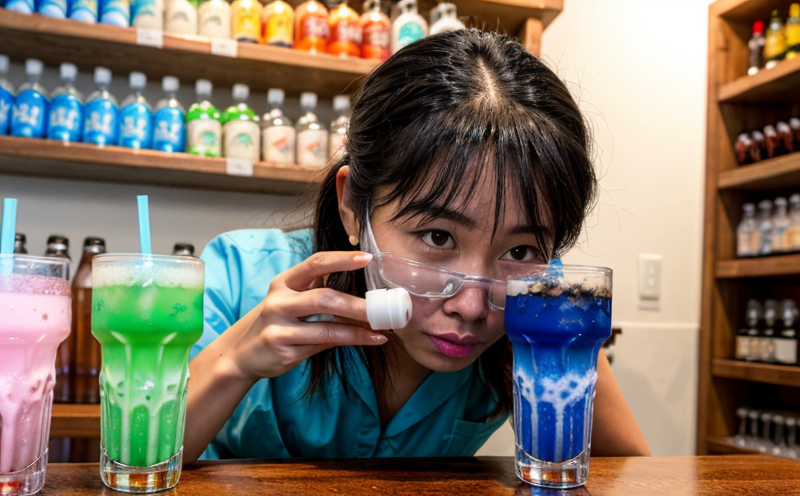FDA BAM Chapter 14 Bacillus cereus Detection in Beverages
The FDA's Bacteriological Analytical Manual (BAM) Chapter 14 is a comprehensive guide for the detection and quantification of Bacillus cereus spores in food products, with particular emphasis on its occurrence in beverages. This chapter addresses the critical need to ensure public health by preventing potential outbreaks linked to this pathogen.
Bacillus cereus is a Gram-positive bacterium that can produce potent toxins leading to vomiting and diarrhea when ingested. Its spores are widely distributed in nature, making them hardy against environmental stresses and capable of surviving harsh processing conditions. This makes the presence of these spores particularly concerning in beverages, where they pose significant risks if not adequately controlled.
The FDA's BAM Chapter 14 outlines a set of validated methods to detect and enumerate Bacillus cereus in various food matrices, including beverages such as milk, fruit juices, and alcoholic drinks. The focus here is on ensuring that any potential presence of the spores does not compromise product safety or consumer health.
The testing process involves several critical steps: sample collection, preservation, enrichment, inoculation, incubation, and detection. Compliance with this chapter ensures that laboratories adhere to stringent guidelines set forth by regulatory bodies, thereby enhancing trust in the quality and safety of beverages reaching consumers.
Understanding the nuances of BAM Chapter 14 is crucial for industries operating under FDA regulations. By meticulously following these protocols, manufacturers can ensure compliance while also safeguarding public health. This level of vigilance is essential to prevent contamination issues that could lead to recalls or other severe consequences affecting brand reputation and consumer trust.
Given the complexity involved in detecting spores within beverage formulations, it's imperative for laboratories to have robust methodologies and experienced professionals who can navigate these challenges effectively. Compliance with BAM Chapter 14 not only helps maintain regulatory standards but also enhances overall product quality by minimizing risks associated with microbial contamination.
| Sample Types | Testing Methods | Acceptance Criteria |
|---|---|---|
| Milk, Juice, Alcoholic Beverages | BAM Chapter 14 Methodology | Presence of spores below threshold limits as per FDA guidelines |
Why It Matters
The detection and control of Bacillus cereus in beverages are paramount for maintaining high standards of food safety. Failure to properly address this issue can lead to serious health implications, including foodborne illnesses characterized by nausea, vomiting, diarrhea, and abdominal pain.
Implementing stringent testing protocols like those outlined in FDA BAM Chapter 14 helps prevent these risks by ensuring that products meet strict microbial limits before reaching the market. This proactive approach protects consumers from potential dangers while also safeguarding brand reputation and consumer confidence.
In addition to protecting public health, adhering to such rigorous standards fosters a culture of excellence within manufacturing facilities. It encourages continuous improvement in quality assurance practices, ultimately leading to safer, higher-quality products for consumers worldwide.
The importance of accurate and reliable testing cannot be overstated when dealing with pathogens like Bacillus cereus. By leveraging advanced techniques and adhering strictly to regulatory guidelines, laboratories can play a crucial role in maintaining the integrity and safety of food products across various sectors.
Industry Applications
The application of FDA BAM Chapter 14 is broad and includes multiple beverage categories. Below are some specific instances where this protocol finds relevance:
| Beverage Type | Description | Testing Parameters |
|---|---|---|
| Milk Products | Including pasteurized and raw milk, cream-based products. | Detection of spores using BAM Chapter 14 methodology. |
| Fruit Juices | UHT processed or cold-pressed fruit juices. | Enrichment and spore count determination as per FDA guidelines. |
| Alcoholic Beverages | Spirits, beers, wines. | Detection of spores in final product post-bottling. |
Eurolab Advantages
At Eurolab, our expertise lies in providing comprehensive microbiological testing services that meet the highest standards set by regulatory bodies worldwide. Here are some key advantages of choosing us for your FDA BAM Chapter 14 compliance needs:
- State-of-the-Art Facilities: Equipped with cutting-edge technology and instrumentation.
- Experienced Technicians: Skilled professionals dedicated to delivering accurate results.
- Comprehensive Reporting: Detailed reports aligned with international standards for easy interpretation.
- Quick Turnaround Times: Efficient processing to ensure timely delivery of results.





